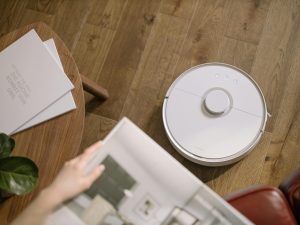Cybersecurity Risks in IoT Devices: Mitigation Strategies for Homeowners
The rise of the Internet of Things (IoT) technology has brought about endless possibilities and convenience to the modern world. With IoT devices being integrated into various aspects of our daily lives, homeowners now have access to smart homes and connected devices that make everyday tasks easier. However, this advancement in technology also poses a significant threat to our cybersecurity. As more and more IoT devices enter our homes, the risk of cyber attacks and privacy breaches increases. In this article, we will explore the cybersecurity risks associated with IoT devices and provide mitigation strategies for homeowners to protect their homes and personal information.
Cybersecurity Risks in IoT Devices
IoT devices, such as smart TVs, home security systems, and even smart refrigerators, are internet-enabled and have the ability to collect and transmit data. While this may seem harmless, it also means that these devices are susceptible to cyber attacks. Here are some of the common risks associated with IoT devices:
Weak Passwords
Many IoT devices come with default login credentials that are easily accessible to hackers. These default passwords are often weak and can be easily guessed, making it easy for cybercriminals to gain unauthorized access to the device and its data.
Outdated Software
IoT devices are often designed to be low-cost and have limited processing power, which means they are not always capable of running the latest software updates. This makes them vulnerable to known security vulnerabilities that can be exploited by hackers.
Lack of Encryption
Since IoT devices are constantly collecting and transmitting data, it is crucial that the data is encrypted to protect it from being intercepted by cybercriminals. However, many IoT devices do not have proper encryption measures in place, making the data vulnerable to theft.
Malware Attacks
With the increasing popularity of IoT devices, cybercriminals have found ways to use them as a gateway for malware attacks. Malware can be installed on an IoT device, giving hackers remote access to the device and the network it is connected to.
Mitigation Strategies
As the use of IoT devices continues to grow, it is essential for homeowners to take necessary precautions to protect their homes and personal information. Here are some mitigation strategies to consider:
Change Default Passwords
The first and most crucial step in securing your IoT devices is to change the default login credentials. Use strong, unique passwords for each device and avoid using default passwords provided by the manufacturer.
Keep Software Updated
Regularly check for software updates for your IoT devices and install them as soon as they are available. These updates often include security patches that can help protect your device from known vulnerabilities.
Enable Encryption
If your IoT device has the option to enable encryption, be sure to do so. This will ensure that any data transmitted from the device is protected and cannot be accessed by unauthorized users.
Separate IoT Network
Consider creating a separate network for your IoT devices to isolate them from your main home network. This will add an extra layer of protection and prevent hackers from gaining access to other devices on your network.
Invest in Security Software
Investing in a reputable security software that offers protection for your IoT devices can help detect and prevent cyber attacks. Look for security software that offers features specifically for IoT devices.
Final Thoughts
The convenience and efficiency of IoT devices come at a cost – the risk of cyber attacks and privacy breaches. As more and more homeowners adopt smart home technology, it is crucial to take necessary precautions to protect ourselves from these risks. By following the mitigation strategies mentioned in this article, homeowners can ensure the security of their homes and personal information in the ever-growing world of the Internet of Things.






